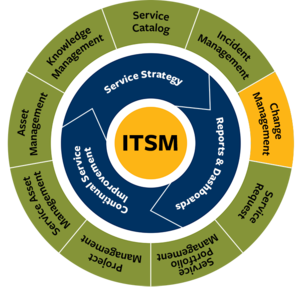
The purpose of the IT Change Management process is to manage the lifecycle of all changes while enabling beneficial changes and minimizing the disruption often associated with changes. The scope of change management includes new services or modifications to existing IT services.
Goals
The goals of IT change management process at UC Berkeley include:
-
Respond to the customer’s changing business requirements while maximizing value and reducing incident, disruption, and rework
-
Respond to the business and IT requests for change that align services with business needs
-
Ensure that changes are recorded and evaluated, and that authorized changes are prioritized, planned, tested, implemented, documented,reviewed and communicated in a controlled manner
-
Ensure that all changes to configuration items (CIs) are recorded in the configuration management system
-
Optimize overall business risk - it is often correct to minimize business risk but sometimes it is appropriate to knowingly accept a risk because of the potential benefit.
Types of Changes
-
Normal change
Is the addition, modification or removal of anything that could have an effect on an IT service. Normal changes are planned in advanceto ensure enough time to notify groups that may be impacted by the change. -
Emergency change
Is a change that must be introduced as soon as possible. For example, to resolve a major incident or implement a security patch. Emergency changes are in response to an active incident and/or problem. -
Standard change
Is a pre-approved change that is low risk, relatively common, and follows a well documented procedure with a history of success.
Our Approach
At UC Berkeley, we are committed to the following IT Change Management practices by:
-
Ensuring that changes create business value and that the benefits for the business created by each change are realized.
-
Establishing a change management process to minimize the likelihood of conflicting changes and potential disruption to supported environments.
-
Establishing accountability and responsibilities for changes throughout the service lifecycle.
-
Performance and risk evaluation of all changes that impact service capability.
